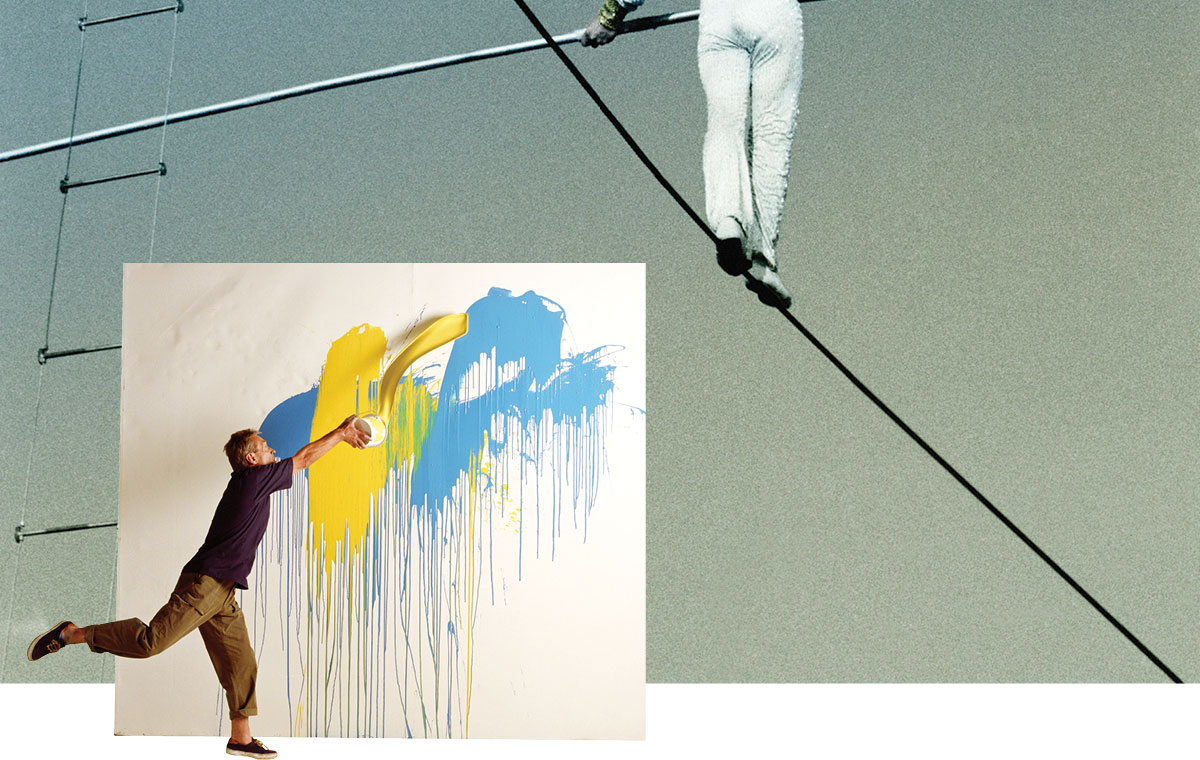



About

IN EVERY ISSUE
1.
PRESIDENT'S MESSAGE
Why Cultivating Value Matters

2.
Publisher's Message
Creativity, Authenticity, and the Power of Standing Out

3.
FROM THE EDITOR
Welcome to the January/February 2025 Issue of the Marketer

Calendar of Events
4.

As a marketer in the architecture, engineering, and construction (A/E/C) industries, you are walking a tightrope. Every day, you are balancing two big responsibilities:
- To the left of the rope are executing marketing tactics that create value for your firm.
- To the right of the rope are continuous deadlines and immovable tasks.
Why Creativity Needs Failure
Being creative means trying new things. It’s about taking chances and coming up with bold ideas. Sometimes, those ideas work out, and sometimes, they do not. In industries like ours, which tend to play it safe, this can be a scary venture. Most A/E/C operations leaders approach business conservatively. They are technically trained designers and builders who are taught to be risk-averse. These leaders might worry about taking risks, but here’s the thing: if you do not take risks, your marketing will be boring and predictable, which puts you at risk of being ignored.
“If you fail and then you figure out a solution with the people you work with to overcome that failure, you gain a lot of self-confidence. And if you gain self-confidence, the next opportunity you have to succeed, you have a much better opportunity to do just that. To me, failure is amazing. It teaches you and really forces you to look inside yourself about what you can do better.”
— Tom Brady
Failing does not mean you have reached the end. It’s part of the process of improving, learning, and building the confidence to try again. When you learn from failure, you can create even better marketing in the future. So be sure to make space for failure!
How to Make Space for Failure
For failure to be useful, it needs to happen in a way that is safe and helpful. This means not taking wild risks but creating an environment where people feel comfortable trying new ideas. Here is how you can do that:
Set Limits
Create guidelines for taking risks. For example, try out bold ideas on a small scale or test them with a limited audience. Work with your leadership to gauge acceptable risks.
Example
If you are taking a bold, creative step in messaging for an email campaign, test your campaign first on a small number of clients who are big fans. Fans of your firm have the relational capital necessary to receive honest feedback without the risk of losing them.
ENCOURAGE EXPERIMENTING
Make your workplace a space where people feel okay sharing and testing new ideas. Give them time and tools to experiment. Engage your operational leadership to approve time for experimenting and trying new ideas.
Example
Request two to three hours a week dedicated to creative experimentation. Use this time to rewrite content in a new creative direction or try a new layout for a specific landing page on your website.
Learn from Mistakes
When something does not work, talk about it. Figure out what went wrong and how you can improve for next time. Share what you learn with leadership and how you intend to pivot.
Example
You try a new brand awareness campaign on your social media channels that does not meet any of your goals. Step back and review your process and strategy; make changes and try again.
Celebrate Growth
Recognize the value of trying, even when it doesn’t work. Reward the lessons learned and the courage it took to take a chance. Be sure to thank everyone who contributed, and make sure you appreciate their willingness and effort.
Example
Regarding that failed brand awareness campaign on social media, recognize and appreciate your operational leaders. Let them know you value their trust in you to do something that did not work but still give you space to try again.
Staying Balanced on the Tightrope
As marketers, we are the storytellers for our firms. We take technical achievements and turn them into stories that make sense to clients and stakeholders. To stand out, we need to do this in ways that are fresh and interesting. Playing it safe with marketing does not achieve this.
Walking the tightrope between creativity and safety takes confidence. It requires trusting yourself, your team, and your leadership. And it means understanding that failure isn’t a mark of shame. Instead, it’s a sign that you’re growing and improving. Every leader who leads well wants their people to grow and improve!
A Message to Technical Leaders
If you’re a technical leader in the A/E/C industries, here’s something to think about: your firm’s marketing team needs space to fail. Not recklessly, but with purpose. When you give your marketers the freedom to explore, you empower them to find new, exciting ways to promote your firm. This could make a big difference in how your firm stands out. Work with your marketing team to create boundaries, encourage experimentation, process mistakes, and celebrate growth.
Let’s change how we think about failure. Instead of seeing it as something bad, let’s see it as a necessary part of being creative. With careful planning and a commitment to learning, failure can become a powerful tool for marketing success.
Gabe Lett, CPSM, FSMPS, has served four consulting engineering firms over a 21-year career. He currently serves as Chief Marketing Officer for Prairie Engineers, a civil engineering, geospatial, and environmental firm. In 2021, he published “The AEC Professional’s Guidebook,” which offers seventy lessons to strengthen design and construction professionals’ careers. Gabe has presented to SMPS chapters, regional conferences, and several industry associations. He has been a guest on Interesting People & Places, AEC Marketeer, The PSM Show, and The Civil Engineering Podcast. His background as a Licensed Professional Counselor gives Gabe unique insights into the marketing profession.
Connect on Linkedin








